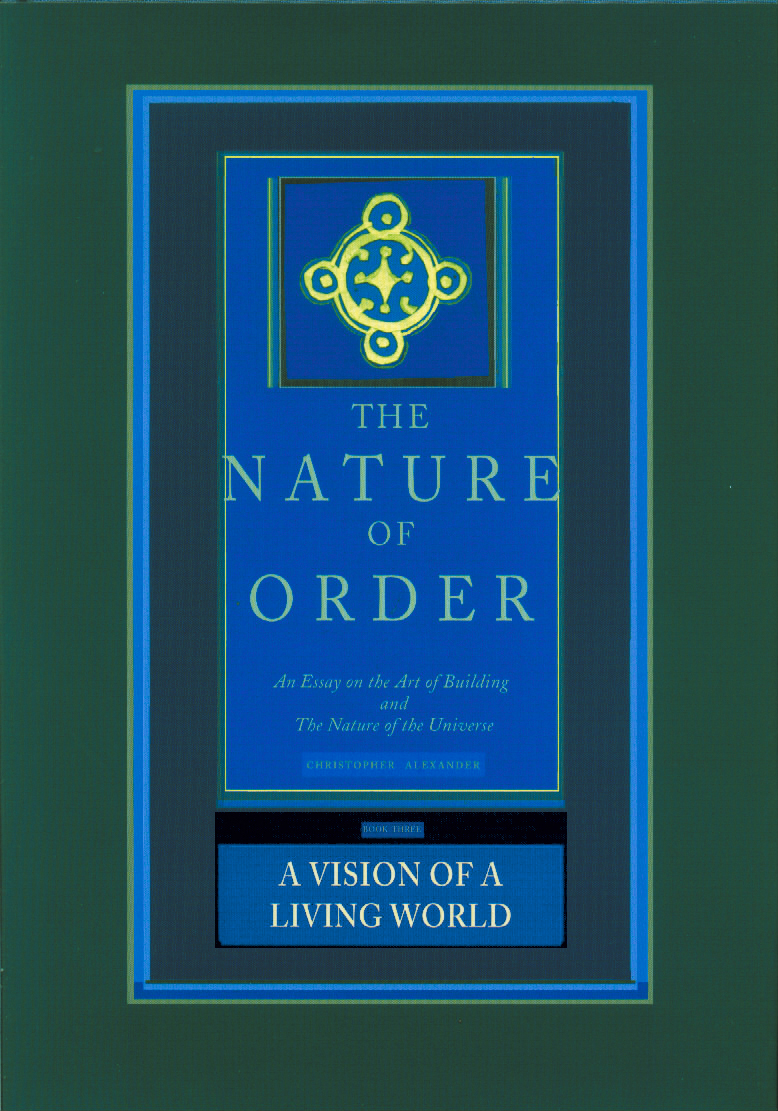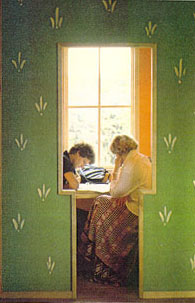|

BOOK THREE: A VISION OF A LIVING WORLD
". . . Alexander's approach presents a fundamental challenge to us and our style-obsessed age. It suggests that beautiful form can come about only through a process that is meaningful to people . . ."
Thomas Fisher, former Editor,
Progressive Architecture
-Thomas Fisher, former Editor,
Progressive Architecture
From a practical point of view, this is the most compelling of the four books. Hundreds of photographs and plans of new buildings that have living structure, and the processes which gave them life, demonstrate, for the first time, what the concept of living structure can mean in buildings of our time and of the future.
 The really good building. The really good space. Places that reach an archetypal level of human experience, reaching across centuries, across continents, across cultures, across technology, across building materials and climates. They connect to us all. They connect us to our feelings. What is more, as we study them, we realise that they all share a similar geometry. How are they made? The practical task of making beauty is the principal subject of A Vision of a Living World. The really good building. The really good space. Places that reach an archetypal level of human experience, reaching across centuries, across continents, across cultures, across technology, across building materials and climates. They connect to us all. They connect us to our feelings. What is more, as we study them, we realise that they all share a similar geometry. How are they made? The practical task of making beauty is the principal subject of A Vision of a Living World.
In the four books of The Nature of Order we have been given a new framework for perceiving and interacting with our world, a methodology for creating beautiful spaces, a cosmology where art, architecture, science, religion and secular life all work comfortably together. The third book shows us -- visually, technically, and artistically -- what a world built in this cosmology and framework is likely to be: what it may look like and be like.
 Hundreds of examples of buildings and places are shown. New forms for large buildings, public spaces, communities, neighborhoods, lead to discussions about the equally important small scale of detail and ornament and color. Many of the examples are built by Alexander and his colleagues, other buildings explored take us around the world and through time. Hundreds of examples of buildings and places are shown. New forms for large buildings, public spaces, communities, neighborhoods, lead to discussions about the equally important small scale of detail and ornament and color. Many of the examples are built by Alexander and his colleagues, other buildings explored take us around the world and through time.
In all instances, it is the uniqueness and adaptation of each place and its parts, and their comfort, which hold attention: the uniqueness coupled with simplicity and beauty of form and color.
With these examples, lay people, architects, builders, artists, students are able to make this new framework real for themselves, for their own lives, understand how it works and its significance. Alexander gives us a feast for the eyes, and mind, and heart. Places created by living process (Book 2) have living structure (Book 1); and they connect us to our essence as people (Book 4). The seven hundred pictures of his stunning buildings and works of art shown in this book demonstrate in detail what he means.
CLICK TO DOWNLOAD ORDER FORM
|